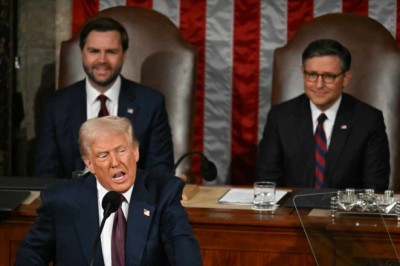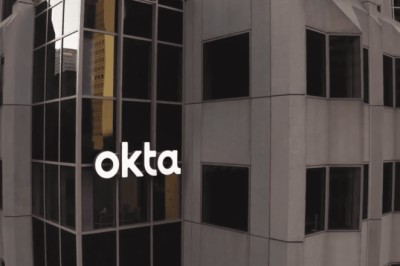
- Congress Minutes
- Pro
- E&E News
- Search Search
SECTIONS
Elections
- 2022 Election Forecast
- 2022 Election Results
- 2022 Senate Election Results
- 2022 House Election Results
- 2022 Governor Election Results
- 2022 News
SERIES
The Exchange
NEWSLETTERS
POLITICO LIVE
COLUMNS & CARTOONS
POLICY
- Agriculture
- Cannabis
- Cybersecurity
- Defense
- Education
- eHealth
- Employment & Immigration
- Energy & Environment
- Finance & Tax
- Health Care
- Space
- Sustainability
- Technology
- Trade
- Transportation
EDITIONS
All three major Wall Street indexes are down by double digits on the year with the tech-dominated Nasdaq off the most at 34 percent as of Dec. 23. | Michael M. Santiago/Getty Images
By Ben White
12/31/2022 07:00 AM EST
Sen. Elizabeth Warren and other progressives have protested that the Federal Reserve’s steep interest rate hikes threaten to punish millions of ordinary workers.
But so far, it’s the higher-income professionals at tech companies and Wall Street banks who have felt the most pain.
Goldman Sachs, Amazon and Facebook are among the firms that have announced plans to shed thousands of workers, while there have been comparatively few layoffs at the lower-wage end of the labor market. What’s more, many lower-income workers’ wages are actually beating inflation, which is at a four-decade high.
Yet this could all quickly change next year if the kind of recession that economists are predicting arrives — and the hard times for workers could come just as President Joe Biden launches an expected reelection campaign.
“Tech and finance are taking the impact of rate hikes the hardest because they gorged the most on low rates,” said David Kotok, chief investment officer at Cumberland Advisors. “But if you are a carpenter or a retail worker right now you can still quit your job whenever you want and instantly go somewhere else and get paid more. This won’t continue to be true if we go into a real recession.”
The numbers tell the story of the higher-end pain, lower-end gain phenomenon.
American companies this year have announced the layoffs of 320,173 workers, a 6 percent increase over the first 11 months of 2021, according to data firm Challenger. Of that number, by far the most came in the tech sector — 80,978, or more than a quarter.
Wealthy investors who rely on market gains have also taken a punch. All three major Wall Street indexes are down by double digits on the year with the tech-dominated Nasdaq off the most at 34 percent as of Dec. 23. Over the last year, the cryptocurrency market implosion vaporized over $2 trillion in investor wealth and cost thousands of well-paid workers their jobs.
But predictions of hurt for rank-and-file workers have not fully materialized — at least not yet. And there has been plenty of such concern.
“Do you know what’s worse than high prices and a strong economy? It’s high prices and millions of people out of work,” Warren said back in August. In October, she led a letter with nine other lawmakers accusing Fed Chair Jerome Powell of “an apparent disregard for the livelihoods of millions of working Americans.”
Instead, the market for retail workers, laborers, cooks, cleaners and a broad swath of other lower-paying jobs has remained strong despite officials even in the Biden administration saying they expect a significant decline in employment growth.
Employers created a robust 263,000 jobs in November with only minor signs of cooling in demand for labor. Average hourly earnings are rising at a 5.1 percent annual pace and monthly gains are now outpacing increases in the Consumer Price Index.
These are good times for lower-paid job seekers. But it’s also a potentially big problem for the economy since their wage gains could spur the Fed to crank up interest rates so much that it will trigger a recession. That’s because wage growth this solid feeds into overall inflation as employers pass greater labor costs on to consumers.
The Fed’s Powell has said the economy cannot sustain such wage growth without stoking inflation and that the country needs millions more people to enter the labor market. Even with wage increases, that’s not happening, with the labor force participation rate stuck at 62.1 percent, below its pre-pandemic level.
“Despite very high wages and an incredibly tight labor market, we don’t see participation moving up, which is contrary to what we thought,” Powell said at a December press conference, adding that the slowdown in immigration in recent years has fueled the problem of a lack of workers.
“We need more people,” he said, while also noting that some of the highest wage increases are now occurring in lower-income brackets.
But if wage inflation does not ease, Powell and the Fed are prepared to use rate hikes — both in size and duration — to push down business demand for labor. And in doing so they could spark a significant recession and kick off the kind of job losses that would be brutal for workers and for Biden and the Democrats heading in 2024.
“The speculative, bubble parts of the economy like technology that benefited greatly from the Fed keeping long-term rates lower for longer than were justified have already started to weaken,” said Richard Bernstein, founder of a financial advisory firm that bears his name. “But if we do get a true recession, then the demand for labor will probably significantly subside and you’ll see millions more workers impacted.”
The White House — and some economists — contend that a recession remains avoidable as inflation slowly eases and the impact of previous hikes takes hold. Administration officials note that previous predictions of recession have been wrong — the economy grew at a healthy 3.2 percent pace in the third quarter of the year, the government said on Dec. 22. They also say policies enacted in the last two years on infrastructure and technology development will help avoid a serious downturn.
Both the Fed and the White House got some good news on the inflation front on Dec. 23 with a key metric, the Personal Consumption Expenditures index, dipping to a 5.5 percent increase in November from the same time last year, down from 6.1 percent in October.
“The appetite and action to invest in the U.S. is very high right now,” Brian Deese, White House National Economic Council Director, told POLITICO. “And that’s a reflection of the relative strength of the United States and a reflection of a policy environment that has provided long-term certainty to invest.”
But such a scenario, in which labor shortages ease and wage inflation cools quickly enough for the Fed to relax its restrictive stance, is not the consensus view of economists.
Rather, prognosticators from Bank of America to JPMorgan Chase mostly predict at least a mild recession beginning sometime next year, driving the unemployment rate perhaps substantially more than the current 3.7 percent.
Democratic economist and former Treasury Secretary Larry Summers — among the few to predict the sustained run of elevated inflation — sees joblessness rising to as much as 7 percent before the Fed is done killing inflation.
Such an increase would come at a dangerous time, both for Democrats and workers. Lower-income Americans are cutting deeply into their savings while battling inflation. They are putting more spending on credit cards. And a split Congress is unlikely to agree on any recession-fighting relief spending. Increased immigration seems politically impossible in the near term.
Meanwhile, the state-run, patchwork unemployment-benefit system is underfunded which could make it difficult for policymakers to push cash into laid-off workers’ pockets.
“There is no way we are even close to recession-ready at this point,” said Kathryn Edwards, an economist at the Rand Corp. who focuses on labor market issues. “The unemployment benefit process is how we stop downturns from becoming much larger and more painful than they need to be. And it’s a mess and we’ve done nothing about it. We were not in a good place when Covid hit in 2020 and we are in a terrible place now.”
POLITICO











Comments
0 comment